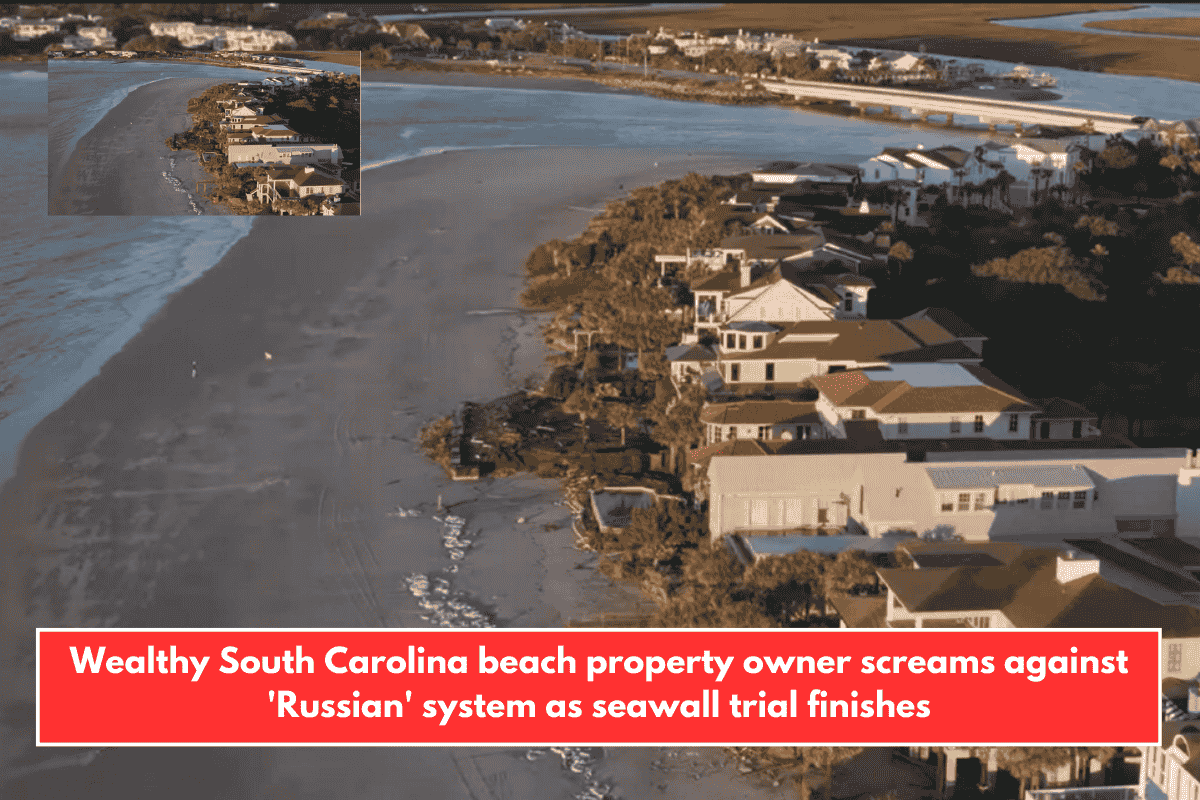MOUNT PLEASANT, S.C. — The legal fight between businessman Rom Reddy and South Carolina’s coastal regulators has become a high-profile case that could impact how the state protects its beaches for years to come. At the center of the battle is a seawall built on the Isle of Palms, which the state says is illegal and harmful to public beach access.
The Conflict: Private Property vs. Public Beach
Rom Reddy, a well-known and outspoken Charleston-area businessman, is challenging a $289,000 state fine for building two seawalls on the beach behind his oceanfront home. The South Carolina Department of Health and Environmental Control (DHEC) says the seawalls were built inside state jurisdiction and on public beach space.
Reddy claims the area where the seawalls were built is outside the state’s building restriction lines, known as the “baseline” and “setback” lines. These lines are designed to prevent new construction too close to the shoreline due to the risks of erosion and sea-level rise.
However, coastal erosion and storms like Hurricane Idalia have reshaped the shoreline, and state officials say the affected area now falls under public beach jurisdiction. Reddy disagrees, saying that erosion caused by the storm was unusual and should not change the legal boundaries.
What’s at Stake
This case could have a lasting effect on how the state manages coastal development, especially when it comes to protecting oceanfront homes from rising tides. South Carolina has banned new seawalls since 1988 because they are known to worsen beach erosion and block public access. Environmentalists argue that letting Reddy keep his seawalls could open the door to more harmful structures in the future.
“This is about families and beachgoers who no longer have safe access to a public beach,” said Lauren Megill Milton of the S.C. Environmental Law Project, who is supporting the state’s case. “Mr. Reddy’s seawall isn’t just a private effort—it affects everyone who enjoys that beach.”
Reddy’s Defense and Claims of Unfair Treatment
Reddy, who fired his legal team and chose to represent himself in court, says he’s being unfairly targeted. He believes other property owners in places like Hilton Head were allowed to build similar seawalls without punishment. State officials argue those situations were different and followed separate rules.
Reddy claims the state is taking his land without paying him for it, something he sees as unconstitutional. He also accuses state regulators of overreach, comparing their actions to government oppression. “I’m fighting not just for me, but for other property owners,” Reddy said during the trial. “It’s an uphill battle.”
He also says the government failed to protect his property from storm damage by not adding enough sand to rebuild dunes in front of his home, which could have prevented the flooding and erosion that led to the seawall’s construction.
The Bigger Picture
Judge Ralph King Anderson III heard closing arguments this week and is expected to issue a ruling in the coming months. If he sides with the state, Reddy will have to remove the seawalls and pay the fine. If the judge rules in Reddy’s favor, it could weaken the state’s authority to enforce beach protection laws and could encourage more private efforts to defend beachfront properties.
Regardless of the outcome, the case is likely to be appealed. Reddy has already said he plans to file a class action lawsuit in federal court, claiming his land was taken without fair compensation. He also runs a political action committee and has used social media and political connections to raise awareness for his cause.
This case is more than just a personal dispute between a homeowner and the state—it could change how South Carolina handles rising seas, erosion, and beach protection. While environmentalists stress the importance of preserving public beaches, property rights advocates worry about growing government control over private land. Judge Anderson’s decision will not only affect Reddy but could shape the future of beach development statewide.














